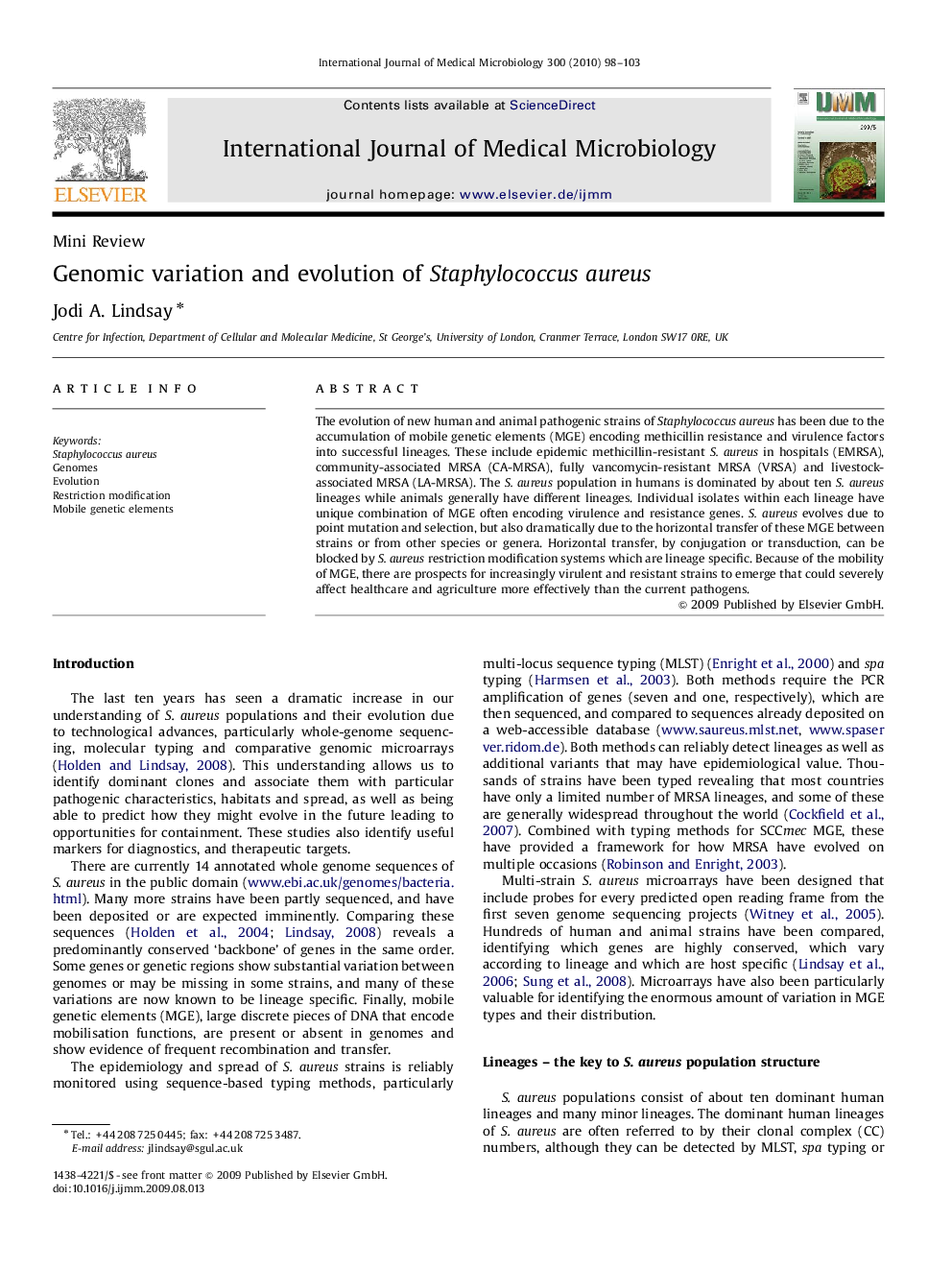| Article ID | Journal | Published Year | Pages | File Type |
|---|---|---|---|---|
| 8386158 | International Journal of Medical Microbiology | 2010 | 6 Pages |
Abstract
The evolution of new human and animal pathogenic strains of Staphylococcus aureus has been due to the accumulation of mobile genetic elements (MGE) encoding methicillin resistance and virulence factors into successful lineages. These include epidemic methicillin-resistant S. aureus in hospitals (EMRSA), community-associated MRSA (CA-MRSA), fully vancomycin-resistant MRSA (VRSA) and livestock-associated MRSA (LA-MRSA). The S. aureus population in humans is dominated by about ten S. aureus lineages while animals generally have different lineages. Individual isolates within each lineage have unique combination of MGE often encoding virulence and resistance genes. S. aureus evolves due to point mutation and selection, but also dramatically due to the horizontal transfer of these MGE between strains or from other species or genera. Horizontal transfer, by conjugation or transduction, can be blocked by S. aureus restriction modification systems which are lineage specific. Because of the mobility of MGE, there are prospects for increasingly virulent and resistant strains to emerge that could severely affect healthcare and agriculture more effectively than the current pathogens.
Related Topics
Life Sciences
Biochemistry, Genetics and Molecular Biology
Biochemistry, Genetics and Molecular Biology (General)
Authors
Jodi A. Lindsay,
